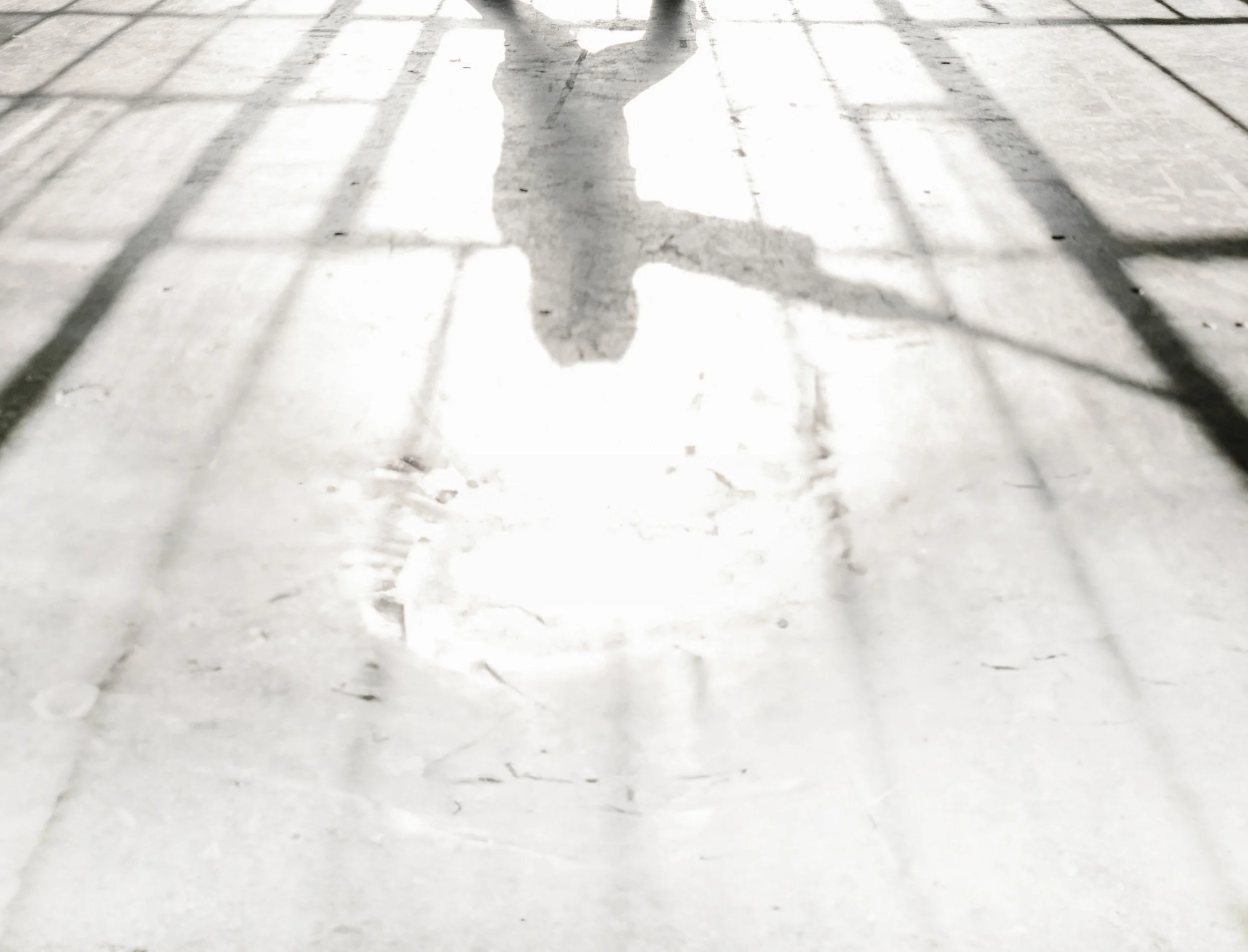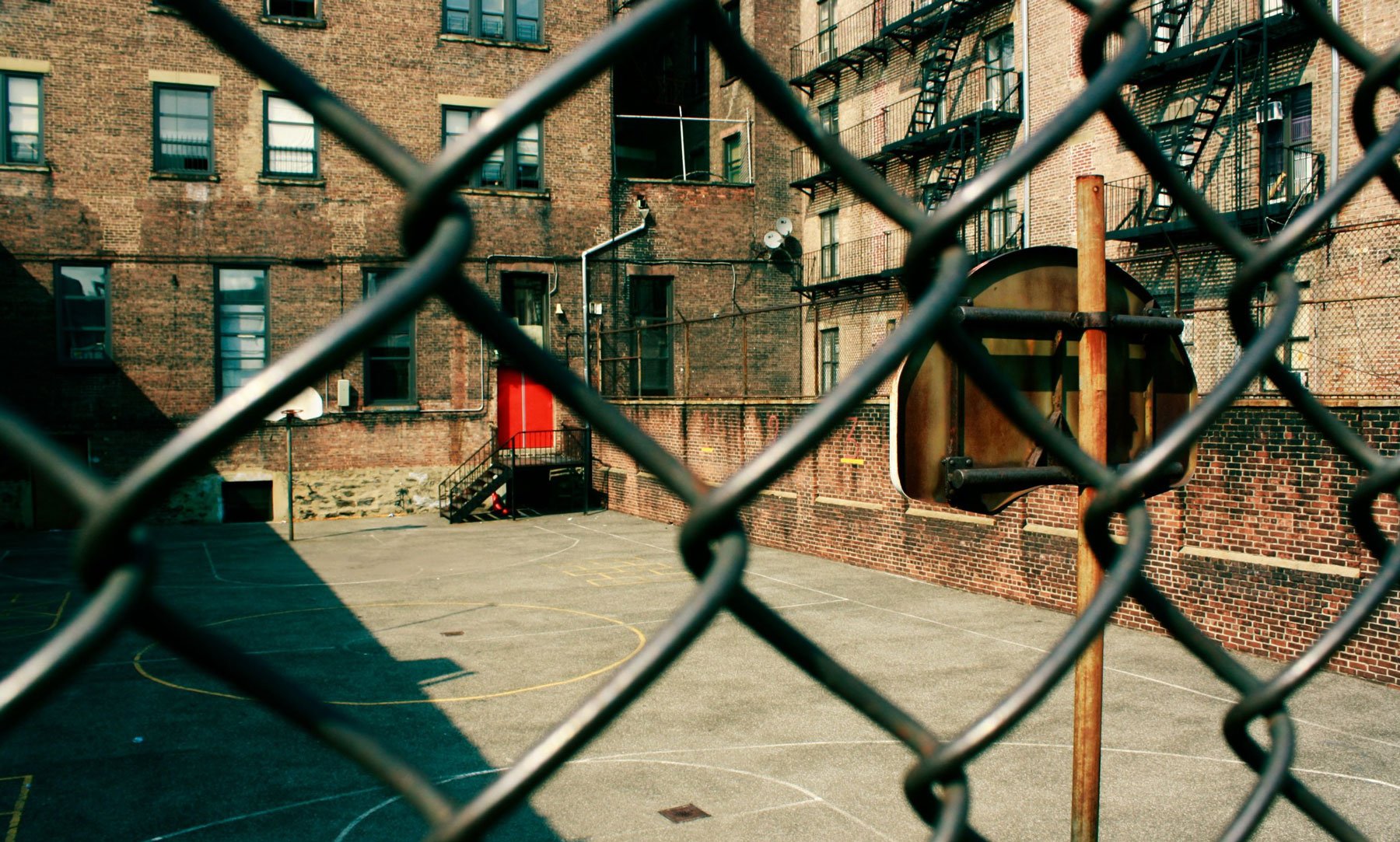Immortal Fist vs. Harmonious Sword: Martial Arts in 1970s Harlem
Amid the urban decay of NYC in the 1970s, recently-immigrated martial arts masters opened schools throughout the five buroughs, bringing their knowledge, discipline, and rivalries. Two of Sifu Quan Zhao’s former students give an oral history of that era, and what exactly went down during the infamous “Battle of Six Storms.”
The Mojo Dojo today on 8th Avenue, site of numerous martial arts street fights from 1972-1978. Photo credit: Bertrand Colombo
Poster for Sifu Quan Zhao’s Five Immortal Fists Academy, where Adams trained for five years.
To hear Arthur Adams tell it, his time at Sifu Zhao’s Five Immortal Fists Academy in East Harlem kept him out of jail.
Arthur Adams is an amiable man in his late 60s, still in fighting-trim shape and recently retired from the Yonkers fire department where he was chief for nearly thirty years. He remains honest about the reality of growing up in East Harlem during the 1970s, but time has softened some of the harder edges. “I started with Sifu at fourteen and trained with him until college,” Adams says. “He’s the reason I went to college. My parents did their best but I was the youngest of four and my older brothers were in constant trouble with the police. I had a lot of anger. I got into a lot of fights. That’s why I wanted to take kung-fu.”
In exchange for lessons, Quan Zhao had Adams clean the dojo daily.
“My labor was worth more to the Academy than my money,” Adams says, “and you know Sifu got his labor’s worth because he’d inspect the bathroom and every inch of those mats. If I missed one tiny spot, he’d make me do it all over again. He’d stand in the corner, sipping tea from his favorite cup, just waiting for me to mess up. Class couldn’t start until the mats passed inspection.”
He laughs. “Now I go see my daughter in her karate class and it’s all katas and written tests. At the Academy if you wanted to go up in rank you had to hold your own against every instructor. They’d pull their punches and kicks depending on your size but you felt it every time they hit you. Sifu Ramirez broke three of my ribs. Sifu Carter knocked out two of my teeth and split my forehead almost in half.”
He points to a long, faded scar above his right eyebrow. “We were all a little crazy. The Hung Gar school was a block north, the Shotokan school was a block south, there was a wrestling group that met every Friday night in the church next door and they were always looking for a good scrap. Everyone was tough but Sifu Shen and his crew were the biggest threat.”
Sifu Shen was Jian Shen, owner of the School of the Harmonious Sword, three blocks east of Zhao’s Academy. Shen had a reputation of associating with NYC street gangs, including the Black Spades operating out of the Bronx and the Seven Immortals native to Harlem. According to Adams, the Seven Immortals got their name from Zhao’s Five Immortal Fists technique.
“One of the founders, this little guy named Leon, was a former student of Sifu Zhao. Leon got kicked out of the Academy, we never really knew why, but a few months later a new gang in Harlem was calling themselves the Seven Immortals. It was really disrespectful. Sifu was cool, though. Nothing phased him. Only time I saw him mad was when we went to see Enter the Dragon and Bruce Lee talks about how he’s a member of the Shaolin Temple, and Sifu started shouting at the screen: ‘That’s not Shaolin style!’”
Shen’s Harmonious Sword was quick to challenge rival schools. If the challenge wasn’t accepted, Shen would send his best students as a provocation.
“It was ridiculous,” says Frederick Washington, a former student at the Five Immortal Fists Academy and their first African-American instructor. Washington is now a Georgia superior court judge. He’s five years older than Adams and like Adams he remains in good shape. “Shen’s idiots would go to the kung-fu matinees, get themselves worked up, and come looking for trouble.” He allows himself a smile. “So we gave them trouble.”
After months of property damage and a few ER visits, students from the rival schools agreed to only fight off-campus, on neutral ground. “Sifu Ramirez named it the ‘Mojo Dojo,’” Washington says. “It was just a basketball court sandwiched between the tenements on 8th Avenue. We drew a crowd. The tenants watched from their windows. Sometimes you’d see a police officer hanging around, pretending not to notice all the young black and Hispanic men in martial arts uniforms beating the stuffing out of each other. The Mojo Dojo was for students only. None of the masters would ever set foot in the there. Except that one time.”
“That one time” is known among old Harlem residents as the Battle of Six Storms, a kumite-style big brawl that took place during a torrential downpour in August of 1976. As both Adams and Washington remember, six masters from the top local martial arts schools had grown tired of the seemingly never-ending feuds that were threatening to become all-out gang warfare, so they agreed to finally settle their differences in the Mojo Dojo.
Sensei Kenzai Otagawa, a three-time national full contact karate champion, represented his Shotokan dojo. Sifu Jian Shen represented his school, which not only taught the Shaolin butterfly swords but also Northern Praying Mantis style. Sifu Kang represented Hung Gar. Sifu Xiong Meng represented Choy Li Fut. Sensei Akihiro Tanaka, also a former world champion, taught Kyoshinryu karate.
Sifu Quan Zhao’s favorite t-shirt.
Shockingly, all six masters agreed to allow weapons from their respective disciplines.
Adams recalls that August afternoon. “It felt like the entire neighborhood was packed into that little basketball court. We didn’t know if the masters were actually going to go through with it. We thought maybe it was a lesson in compromise, that they’d come to an agreement and send everyone home.”
“I knew they were going to fight,” says Washington. “They were all wearing traditional uniforms. Except for Sifu Zhao. He wore sweatpants and his favorite t-shirt.”
Washington suspected five of the masters had made secret agreements. “The situation broke down along racial lines. Two Japanese masters on one side, three Chinese masters on the other. Sifu Zhao stood alone.”
Sifu Zhao’s teacup.
Within the first minute, Sifu Shen severed Sensei Otagawa’s hand with his butterfly sword. The fight was momentarily stopped to allow Otagawa—and his hand—to leave for the nearest hospital. “I’ll never forget the sight of that hand lying across the foul line,” Adams says, “and Otagawa picking it up with his other hand.”
When the fight resumed, it quickly became obvious that on that day, at least, kung-fu was beating karate. “Of course it’s about the fighter, not the style,” says Adams, “and Harlem likely had the best kung-fu schools in the country. Kang and Meng ganged up on the other Japanese guy [Sensei Tanaka] and Shen went after Sifu Zhao.”
According to Washington, Tanaka fled after a brief battle, leaving Sifu Zhao to face three masters.
“Jian Shen was a lowlife but he was also a very, very good martial artist,” Washington says. “In single combat I thought it was a tossup between Shen and Sifu. But with two other masters fighting at Shen’s side…” Washington trails off for a moment. “This wasn’t like the movies, where one man fights off multiple attackers. Real fighting is a numbers game and the bigger number almost always wins.”

“We were ready to jump in,” Adams says. “But Sifu gave us that look. All he needed was that look.”
Despite the overwhelming odds, Washington trusted his teacher. He also understood what was at stake. “They were trying to kill him. Period. Shen was swinging his butterfly swords like he was trying to split mountains. I think Kang had a bo and Meng used a Shaolin spear. Sifu used his teacup.”
Adams confirms Washington’s account. “His weapon of choice was his favorite teacup.”
Washington is almost apologetic as he explains what happened next. “Martial arts lore is filled with so much bullshit that when something extraordinary does happen, like Sifu Zhao winning the Battle of Six Storms with his teacup, nobody believes it.”
“It’s still the most incredible display of fighting prowess I have ever seen,” Adams says. “I’ve been studying martial arts for over fifty years. I’ve watched the greatest UFC champions at their peak, the greatest boxers, the greatest whatevers. Nothing comes close to what Sifu did that day.”
“He turned all three of them into a bloody mess,” says Washington, shaking his head at the memory. “Kids were finding teeth on the court for weeks after. I heard Kang was permanently disabled. Meng couldn’t teach for six months. Shen got it the worst, though. He had to close shop. Some of his former students say he returned to China. I don’t know. Part of me doesn’t want to know.
“After that day, the Five Immortal Fists Academy was top dog. Students from the other schools came to us for instruction. We let ourselves enjoy it. All those years of getting hassled and in one afternoon it was over.”
Adams agrees. “Not gonna lie, it felt good. But Sifu Zhao didn’t care. The next day he was back at work, walking over every inch of the mats, sipping from his teacup, telling me all the spots I missed.”





